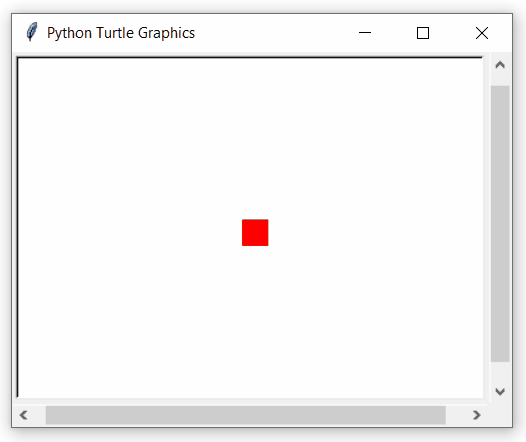turtle.Screen().turtles() function in Python
Last Updated :
27 Aug, 2021
The turtle module provides turtle graphics primitives, in both object-oriented and procedure-oriented ways. Because it uses Tkinter for the underlying graphics, it needs a version of Python installed with Tk support.
turtle.Screen().turtles()
This function is used to return the list of turtles on the screen. This doesn’t require any argument.
Syntax :
turtle.Screen().turtles()
Below is the implementation of the above method with some examples :
Example 1 :
Python3
import turtle
sc = turtle.Screen()
sc.setup(400,300)
t1=turtle.Turtle(shape='square')
t1.color("red")
t1.circle(50)
t2=turtle.Turtle(shape='circle')
t2.color("green")
t2.circle(40)
print(sc.turtles())
|
Output :

[<turtle.Turtle object at 0x000001E90622DAC8>, <turtle.Turtle object at 0x000001E90625CC88>]
Example 2 :
Python3
import turtle
sc = turtle.Screen()
sc.setup(400, 300)
t1 = turtle.Turtle(shape='square')
t1.color("red")
t1.circle(50)
t2 = turtle.Turtle(shape='circle')
t2.color("green")
t2.circle(40)
turt = sc.turtles()
turt[0].circle(-40)
turt[1].circle(-50)
|
Output :

Like Article
Suggest improvement
Share your thoughts in the comments
Please Login to comment...